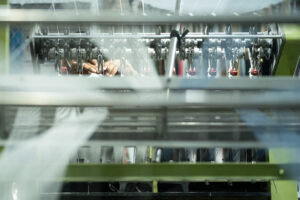Ensuring the quality of accessories within a production process is a critical aspect of maintaining customer satisfaction, brand reputation, and operational efficiency. A well-defined quality assurance (QA) strategy needs to be implemented to identify and rectify potential defects, deviations, or inconsistencies in accessory manufacturing. This comprehensive approach involves various steps, methodologies, and best practices that collectively contribute to delivering accessories of high quality. Here’s an in-depth look at how you can ensure the quality of accessories in your production process:
- Establish Clear Quality Standards and Specifications: Begin by defining precise quality standards and specifications for each accessory. These standards should cover dimensions, materials, finishing, functionality, and any other relevant characteristics. Clear and well-documented specifications serve as the foundation for assessing the quality of accessories at different stages of production.
- Supplier Evaluation and Selection: The quality of accessories heavily depends on the quality of raw materials and components. Thoroughly evaluate and select reliable suppliers who can consistently provide high-quality materials. Regularly review and audit your suppliers to ensure they maintain the expected quality levels.
- Implement Robust Quality Control Points: Integrate quality control points throughout the production process. These checkpoints can include inspections, tests, and measurements to verify that accessories meet the established standards. Conduct inspections at key stages such as raw material reception, component assembly, intermediate stages, and final product assembly.
- Utilize Statistical Process Control (SPC): SPC involves using statistical techniques to monitor and control the production process. It helps identify variations and trends that may lead to defects. By analyzing data from different stages, you can identify potential issues before they escalate.
- Implement Lean and Six Sigma Methodologies: Lean and Six Sigma methodologies aim to reduce waste and defects while improving process efficiency. These methodologies involve tools like root cause analysis, process mapping, and continuous improvement projects that can identify areas for enhancement in the production process.
- Invest in Automation and Technology: Automation and advanced technologies such as sensors, machine vision, and AI-powered inspection systems can enhance the accuracy and speed of quality assessments. These technologies can quickly detect defects that may be difficult to identify through manual inspections.
- Employee Training and Skill Development: Equip your workforce with the necessary skills to identify and address quality issues. Provide training on quality standards, proper handling of materials, and effective use of testing equipment. Well-trained employees are more likely to catch defects early and contribute to process improvement.
- Document and Analyze Defects: Maintain a comprehensive record of defects and their causes. Analyze this data to identify recurring issues, patterns, and trends. This analysis can guide corrective and preventive actions to eliminate root causes of defects.
- Continuous Improvement Culture: Foster a culture of continuous improvement across your organization. Encourage employees to provide feedback, suggest process enhancements, and participate in quality improvement initiatives. Regularly review and update quality standards based on industry trends and customer feedback.
- Feedback Loop with Customers: Engage with customers to gather feedback on the quality of accessories they receive. This direct input can help you fine-tune your quality assurance processes to better align with customer expectations.
- Certifications and Standards Compliance: Adhere to relevant industry standards and certifications. These standards provide benchmarks for quality and serve as a testament to your commitment to producing high-quality accessories.
- Traceability and Recall Readiness: Implement traceability systems that allow you to track the origin and journey of each accessory. This enables swift and accurate recalls if any quality issues arise after distribution.
In conclusion, ensuring the quality of accessories in your production process requires a multi-faceted approach that encompasses clear standards, robust quality control measures, technological integration, continuous improvement, and a customer-centric mindset. By diligently implementing these strategies, you can consistently deliver accessories that meet or exceed customer expectations while maintaining operational excellence.


